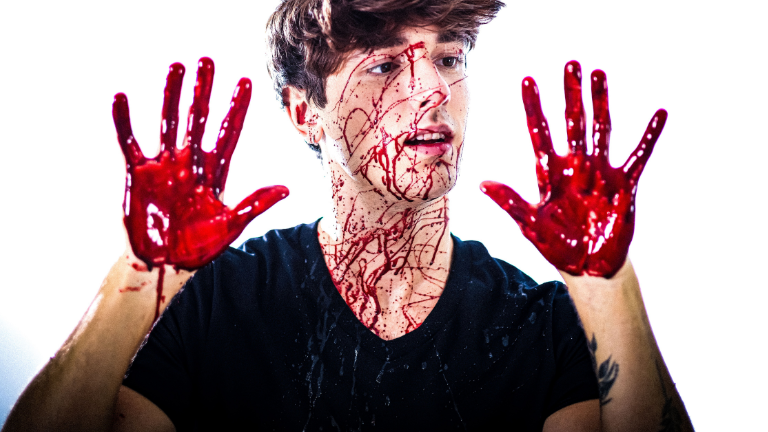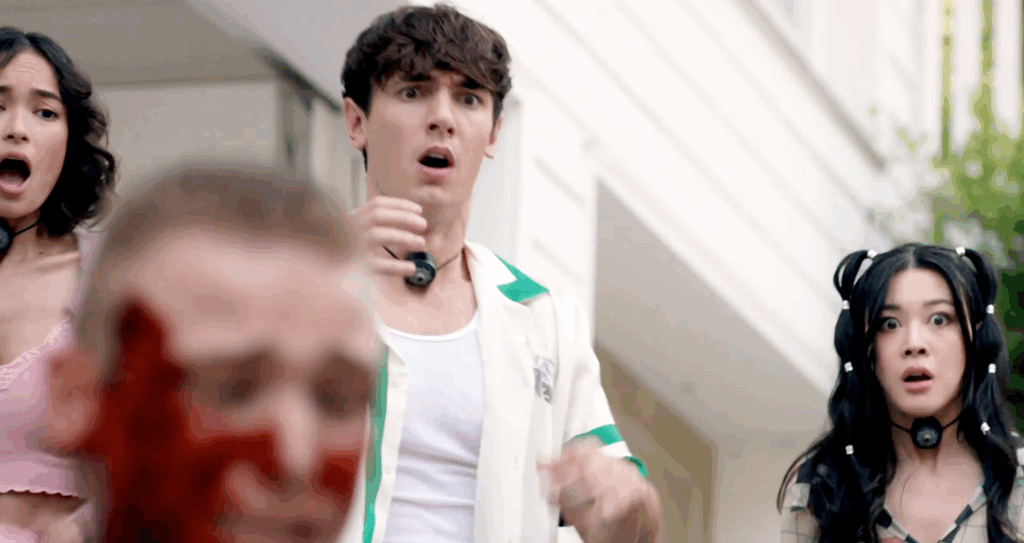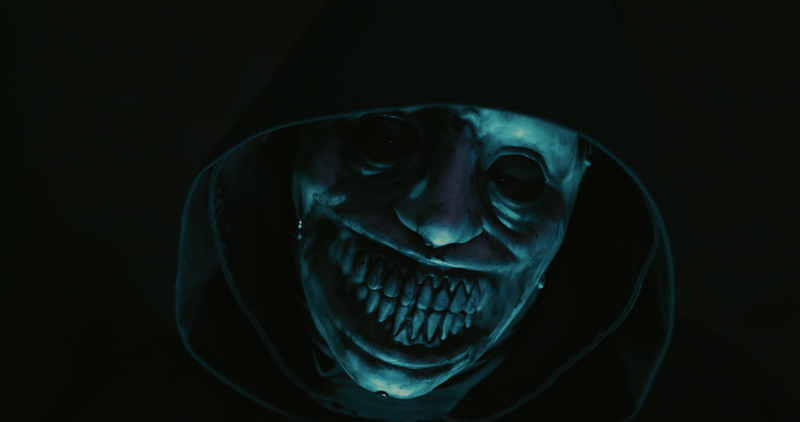
Influencer Horror Movies: Social Media’s Dark Terror Unleashed
Written by on Jul 03, 2025 12:39 PM
What’s scarier than a monster under your bed? How about a million anonymous trolls in your comments section, a livestream chat demanding blood, or the crushing weight of knowing your survival depends on your next viral post or meme? Welcome to the terrifying and timely world of influencer horror, the fastest-growing subgenre that holds a black mirror up to our digitally-obsessed society. This isn’t just about jump scares; it’s a deep dive into the psychological dread of a life lived for likes, where cancellation is a fate worse than death—and sometimes, the cause of it.
For decades, horror has masterfully exploited our contemporary anxieties. From the Cold War-era paranoia of Invasion of the Body Snatchers to the suburban decay in Halloween, scary movies reflect the fears of their time. Today, our biggest fears are increasingly digital. We worry about our privacy, our online reputation, and the dark side of a culture built on curated perfection. Social media horror taps directly into this vein of modern terror, creating stories that feel disturbingly plausible.
In this comprehensive guide, we’ll explore the DNA of the influencer horror genre, from its psychological roots to its evolution on screen. We’ll break down the key movies that have defined this digital nightmare and look ahead to the film that is set to become the subgenre’s crowning achievement: Skillhouse. Get ready to log on, because the terror is about to go live.
At its core, influencer horror is a horror subgenre where the plot, themes, and terror are intrinsically linked to the culture of social media influencing. It’s more than just a character having an Instagram account; it’s about the very mechanics of online fame—the relentless pursuit of clout, the monetization of self, and the terrifying power of a digital audience—becoming the engine of the horror itself. These films dissect the curated identities of online personalities and expose the rot that often lies beneath the glossy, sponsored surface.

The Terror of Cancellation: Before the threat of physical death, there’s the social death of being de-platformed or “canceled.” These films understand that for an influencer, losing their audience is the ultimate horror, a fear that can be exploited by villains with terrifying precision.
The Performance of Authenticity: Influencers are constantly performing a version of their “authentic” selves. The horror often erupts when this performance shatters and a monstrous reality breaks through. Is their terror real, or is it just content for the feed?
The Parasocial Relationship Turned Deadly: The one-sided intimacy between a creator and their followers is ripe for horror. These films explore what happens when an obsessed “fan” crosses the digital divide into the real world with sinister intentions.
Clout at Any Cost: The central theme of many influencer horror films is the willingness to do anything for engagement. This can range from faking hauntings and abductions to committing real-world violence, all while the camera is rolling.
The Audience as Judge, Jury, and Executioner: In this genre, the online audience is rarely a passive observer. Their likes, shares, comments, and donations often directly influence the unfolding horror, deciding who lives and who dies, making them complicit in the carnage.
The aesthetic of influencer horror is a direct evolution of the found footage genre. Films like The Blair Witch Project (1999) and REC (2007) conditioned us to accept shaky, first-person camera work as a sign of terrifying realism. Social media horror takes this a step further. Instead of footage being “found” later, the horror often unfolds in real-time via a livestream on Twitch, YouTube, or TikTok.
This “livestream terror” format creates an unbearable sense of immediacy and helplessness. The audience, both in the film and in the theater, watches events unfold live, unable to intervene. The constant stream of comments, emojis, and donations scrolling on screen adds another layer of anxiety, highlighting the audience’s role in the unfolding nightmare. It transforms the viewing experience from passive observation to active, if unwilling, participation.
Why has the influencer horror movie become so potent and popular? It’s because it taps into anxieties that are universally understood in the 21st century. The themes resonate deeply because, on some level, we all participate in the same digital ecosystem. Whether you have ten followers or ten million, the pressures and perils of online life are familiar.
Living online means living with a new set of fears. We are all, to some extent, building a personal brand. We curate our photos, carefully craft our posts, and feel a jolt of anxiety when we share something that might be misinterpreted. Influencer horror takes this low-level, everyday stress and dials it up to a terrifying extreme.
These films explore profound modern fears:
When we watch an influencer spiral into a nightmare fueled by these very things, it feels personal. It’s a validation of our own digital anxieties, magnified into a life-or-death struggle.
A classic horror trope is the unreliable narrator, someone whose perception of events can’t be trusted. Influencers are the ultimate unreliable narrators. Their entire career is based on crafting a narrative. When they turn on a camera and scream in terror, a horrifying question always lingers: Is this real, or is this for engagement?
This ambiguity is a powerful tool. It keeps the audience guessing and creates a profound sense of unease. We’re forced to question the very reality we’re being shown through the lens of someone who profits from sensationalism. This meta-layer makes the horror more intellectually unsettling and psychologically draining.
While it feels like a very recent phenomenon, the roots of social media horror stretch back over a decade. The genre has evolved from early cautionary tales to the sophisticated, self-aware critiques we see today, paving the way for the ultimate showdown in Skillhouse.
The first wave of social media-centric horror used platforms as a deadly plot device. They weren’t always about “influencers” as we know them today, but they established the terrifying idea that your online activity could have fatal consequences.
Unfriended (2014): A landmark film that took place entirely on a computer screen. A group of friends is haunted via Skype by the ghost of a girl they bullied into suicide. Their secrets are exposed, and their lives are ended, one by one, in a brutal display of digital karma.
Friend Request (2016): Explored a similar theme, where a popular college student unfriending a mysterious outcast unleashes a demonic force upon her and her social circle.
These films established the screen as the setting and social media as the weapon, proving that a terrifying story could be told through cursors, chat windows, and video buffers.
As influencer culture exploded, so did the horror films centered on it. The focus shifted from the platform to the personality, dissecting the lives of those who live and die by the view count.
Spree (2020): A sharp, satirical, and deeply disturbing film starring Joe Keery as a wannabe influencer who rigs his rideshare car with cameras and begins a murder spree to go viral. It’s a brutal commentary on the desperate hunger for attention.
Deadstream (2022): This horror-comedy masterfully nails the influencer persona. A disgraced YouTuber, famous for his cowardly stunts, attempts a comeback by livestreaming a night in a real haunted house. It cleverly mixes genuine scares with a pitch-perfect parody of creator culture.
Sissy (2022): A wellness influencer with a dark past is invited to a former friend’s bachelorette weekend. The film brilliantly juxtaposes the serene, pastel-colored aesthetic of her online brand with a bloody, violent reality when her past trauma is reawakened.
All these films have built the foundation for what is poised to be the genre’s defining entry. Skillhouse takes every theme—the thirst for clout, the complicit audience, the performance of self—and fuses them into a high-stakes, big-budget battle royale.
The premise is pure, distilled social media horror: Ten of the world’s top influencers are kidnapped and locked in a luxury mansion (aka creepiest content house ever) where they are forced to create content for a global audience that votes on their fate. In this sadistic game run by the masked “Triller Killer,” the contestant with the lowest engagement at the end of each round is brutally executed for an audience while they watch live on camera. The film’s tagline says it all: Fame is currency. Death is content. Clout is life.

What makes Skillhouse the next evolution?
It’s no wonder that in our own guide to the year’s most anticipated scary movies, we’ve already called Skillhouse the best new horror movie of 2025. It’s a perfect storm of concept, talent, and timing.
Before the term “influencer” even existed, a wave of cyber-horror films explored the primordial fears of the internet. These movies laid the essential groundwork for today’s social media horror by tapping into anxieties about digital anonymity, viral contagion, and the loss of self in the machine. They established that the greatest threats were no longer in our homes, but on our screens.
Kiyoshi Kurosawa’s masterpiece Pulse (Kairo) (2001) wasn’t about fame, but its terrifying opposite: profound isolation. It depicted a world where ghosts invaded the land of the living through the internet, leading to a quiet, soul-crushing apocalypse fueled by loneliness and despair. It captured the existential dread of being terminally online, suggesting that digital connection only amplified our solitude, and this theme has haunted the isolated protagonists of many an influencer horror movie.
Other films, like FearDotCom (2002), took a more direct approach, creating a literal “ghost in the machine.” The film’s premise of a cursed website that kills anyone who visits it within 48 hours was an early, brutal depiction of a digital threat causing physical harm. Later, The Den (2013) served as a critical bridge to modern horror, grounding the terror in human evil. Its use of a Chatroulette-style platform to show a protagonist witnessing a murder via webcam brought the horror out of the supernatural and into the chillingly plausible world of snuff films and dark web voyeurism.
These early films introduced the core concepts: the screen as a dangerous portal, anonymity as a weapon, and voyeurism as a deadly sin. Modern influencer horror takes these foundational fears and personalizes them. The threat is no longer a random virus or an anonymous ghost; it is a targeted attack on a public figure, with their followers, and our own culture of online consumption, acting as willing accomplices.
While the first Unfriended used a supernatural threat, its standalone sequel, Unfriended: Dark Web (2018), plunged viewers into a far more realistic and disturbing brand of terror. The film follows Matias, who finds a seemingly abandoned laptop and discovers it belongs to a member of a shadowy cabal of cybercriminals called “The Circle.” As he and his friends chat on a video call, The Circle’s members begin to terrorize them in real-time, demonstrating their terrifying ability to hack their lives, manipulate their surroundings, and turn their digital footprint into a weapon against them.
The film’s brilliance lies in its relentless, screen-life format, which creates a suffocating sense of helplessness. We watch entirely from Matias’s desktop as he loses control of his own digital world. The fear it exploits is deeply modern and tangible: the complete loss of privacy and the horror of being watched and controlled by an anonymous, omnipotent force. There are no ghosts here, only ruthless hackers who treat human lives as entertainment, a chilling game for their private audience.
Dark Web was a crucial step toward the current wave of influencer horror. It solidified the idea of a malicious, game-playing audience that holds the power of life and death, a theme now central to films like Skillhouse. By demonstrating how easily a digital life can be turned into a real-world prison, it paved the way for stories where an influencer’s public-facing persona becomes the very thing that makes them a target.
As technology and social media continue to evolve, so will the horror stories they inspire. The rise of AI, deepfake technology, and fully immersive VR worlds presents a chilling new frontier for filmmakers to explore. Imagine a horror film about an influencer whose digital deepfake clone takes over their life, or an interactive VR horror game where the audience’s choices have real, deadly consequences for the streamer playing it.
The genre will continue to reflect the platforms we use. We’ll see horror stories born from the short-form, algorithm-driven chaos of TikTok, the curated communities of Discord, and whatever new platform emerges to capture our collective attention. The core anxieties of being watched, judged, and discarded are timeless. The technology is just a new mask for the monster to wear.
For now, however, Skillhouse is set to be the new benchmark. It represents the pinnacle of what influencer horror can be: a self-aware, thrilling, and terrifyingly relevant commentary on the world we inhabit. It pushes the boundaries of the genre by making the stakes as high as they can possibly be, turning the abstract concept of “social engagement” into a literal fight for survival.
The rise of influencer horror is no passing trend. It is a powerful and necessary subgenre that captures the unique dread of the digital age. It speaks to our fears of losing our privacy, our identity, and our humanity in the relentless pursuit of online validation. By turning creators into victims and their audiences into accomplices, these films force us to examine our own relationship with the content we consume and the digital personas we build.
From early screen-life experiments to the sophisticated character studies of recent years, the genre has matured into one of horror’s most exciting spaces. Now, it is reaching its bloody, brilliant zenith with a film that encapsulates everything that makes this subgenre so terrifying.
Are you ready to experience the peak of this terrifying new wave of horror? Don’t miss the movie that is set to define social media horror for years to come. Witness the deadly game of clout where every post could be your last. The premiere is on the 10th, and the nightmare hits theaters everywhere on the 11th.




"*" indicates required fields